You say nasa is worthless? This proves you wrong.
|
Top 10 NASA Inventions
The spaceship isn't NASA's only great invention.
Hemera/
Thinkstock
The National Aeronautics and Space Administration (
NASA), the U.S. government agency that runs the country's civilian space program, has accomplished some truly amazing feats since its inception in 1958 -- from beating the Soviet Union in the race to put
astronauts on the moon, to exploring the surface of Mars with unmanned robotic vehicles. So you're probably not surprised to hear that NASA employs a pretty awesome brain trust of scientific and engineering talent in a wide array of fields, from astronomy and physics to chemistry, biology and materials science.
NASA has invented all sorts of technology to solve the peculiar problems of space exploration. In the 1950s and early 1960s, it created the revolutionary three-axis stabilization control design that enables satellites to point their antennas, instruments and solar panels with precision. Since then, it's been such a prolific problem solver that about one in every 1,000 U.S. patents is granted to someone working on a NASA project [source:
Rayl].
In fact, the NASA workforce is so ingenious that quite a few of its inventions are useful for those of us who stay on the ground. The agency even has a special administrative branch, the Technology Utilization Program, which focuses on helping companies turn the ideas behind space gadgetry into industrial and consumer innovations.
The list of inventions is certainly long, but if we have to single out a few favorites, these 10 would top the list.
10
Memory Foam
If you're looking to pull one of these in a chair, you'd better hope it comes packed full of memory foam.
Photo courtesy Aaron Fotheringham
In the early 1960s, an aeronautical engineer named Charles Yost worked on technology designed to make sure that the Apollo command module and its astronauts could be recovered safely after landing. That experience came in handy four years later, when Yost was tapped to help
NASA's Ames Research Center develop
airplane seating that could absorb the energy of crashes and increase passengers' chances of survival. Yost created a special type of plastic foam that had the seemingly miraculous ability to deform and absorb tremendous pressure, then return to its original shape.
Researchers discovered that the "slow springback foam," as it was called initially, not only made passengers safer, it also made sitting for hours on long flights more comfortable because it allowed for a more even distribution of body weight.
In 1967, Yost formed his own company, Dynamic Systems Inc., which marketed the innovation as "temper foam." Since then, memory foam has found its way into scores of applications. In the 1970s and 1980s, pro football's Dallas Cowboys team used it to line players'
helmets to reduce the trauma of impact on the field. Shoe manufacturers have called on the foam to create special high-comfort insoles. In hospitals, mattress pads and wheelchair seats made from the foam support patients with painful, dangerous sores on their bodies.
Companies continue to find new uses for memory foam and its descendants. A Colorado company uses a type of memory foam to build inflatable bumper rafts, which resist sinking, for whitewater rides at theme parks. A company in Kentucky builds it into horses' saddles and uses it to make prosthetic braces for injured animals [source:
NASA Spinoff].
Next, we'll look at an invention with the smarts to protect NASA's high-tech equipment from the elements -- both on and off the Earth.
9
Anti-corrosion Coating
NO, NASA DIDN'T INVENT THAT
Two products are often mistakenly attributed to the space program:
- Teflon (actually invented by DuPont back in 1938)
- The powdered breakfast drink Tang (actually developed by General Foods, now Kraft Foods), even though it was on the menu when astronaut John Glenn ate and drank in space in 1962
One challenge with space exploration is that equipment must withstand radical conditions, from the heat of rocket exhaust to extreme cold in space. Surprisingly, one of the most destructive forces is the corrosive effect of saltwater-laden ocean spray and
fog. It rusts gantries -- large frames that surround rocket launch sites -- and launch structures at
NASA's Kennedy Space Center in Florida and other coastal facilities. Fortunately, in the 1970s, researchers at the agency's Goddard Space Flight Center discovered that coating the equipment with a protective layer containing zinc dust and potassium silicate would help thwart the costly rusting.
In the early 1980s, a company called Inorganic Coatings Inc. used the concept to produce a nontoxic, water-based coating, IC 531 zinc silicate, which readily bonds with steel and dries within 30 minutes to a hard, ceramiclike finish. The coating has been applied to bridge girders, pipelines, oil rigs, dock equipment, buoys, tractor-trailer truck frames and even to the exteriors of
U.S. Army tanks.
But perhaps the coating's most celebrated application came in the mid-1980s, when 225 gallons (852 liters) of it were applied to the inside of the
Statue of Liberty, to help curb further deterioration of the century-old iconic figure [source:
Space Foundation].
Next up, we'll meet technology with the ability to let us glimpse something as expansive as the cosmos and as tiny as the arteries traveling away from the human heart.
8
ArterioVision
ArterioVision pairs ultrasound equipment like this with NASA's software genius.
©
iStockphoto/johnnyscriv
Since the mid-1960s, scientists in the image processing lab at
NASA's Jet Propulsion Laboratory (JPL) have been working to improve video imaging software, so that astronomers can turn space probe data into increasingly vivid, high-resolution images of distant planets and other celestial objects.
In recent years, medical researchers have applied some of NASA's software innovations to peer not into the sky but into patients' circulatory systems for signs of atherosclerosis, a common disease in which fatty material builds up inside arteries and threatens to cause
heart attacks and strokes.
The California Institute of Technology, which manages JPL for NASA, licensed the technology to a private company, Medical Technologies International Inc. (MTI), whose chief engineer, Robert Seltzer, was a veteran JPL researcher. The result was ArterioVision software. It can be used with
ultrasound equipment to perform a noninvasive examination of a patient's carotid artery, which carries
blood to the
brain.
Paired with ultrasound technologies, ArterioVision can detect signs of cardiovascular illness at very early stages, when it would otherwise evade detection by conventional tests. As a result, medical experts say that more patients may have a chance to curb the disease with dietary and lifestyle changes, rather than medication or surgery down the line [source:
NASA]. Doctors' offices in all 50 U.S. states offer ArterioVision testing [source:
Lockney].This next NASA invention has expanded lifestyle options for hearing-impaired individuals worldwide.
7
Cochlear Implants
Hearing aids amplify sound, but they don't clarify it.
Comstock/
Thinkstock
In the late 1970s, Adam Kissiah Jr., a hearing-impaired engineer working on the space shuttle program at
NASA's Kennedy Space Center, knew all too well the shortcomings of conventional analog hearing aids. They simply amplified sound entering the ear without clarifying it. In an effort to solve the problem, he put to use his knowledge of NASA's advances in electronic sensing systems, telemetry, and sound and vibration sensors. He came up with the concept for a new type of hearing aid -- an implant that would produce digital pulses to stimulate the auditory nerve endings, which then would transmit the signals to the brain.
Kissiah went on to work with BioStim, a private company, to develop the new device. Kissiah's patented concepts were built upon by other manufacturers [source:
Space Foundation]. Since then, according to the U.S. Food and Drug Administration, 219,000 patients have received cochlear implants [source:
NIDCD]. The devices enable people who've been deaf since birth to hear for the first time. They've also restored hearing for those who still have a responsive auditory nerve but who've lost hearing due to trauma or disease [source:
Space Foundation].
This application of space technology has made an enormous difference in the lives of people like Mike Scheerer, a Peoria, Ill., man in his late 50s, who received a cochlear implant in 2009 and heard songbirds singing in the trees in his neighborhood. "I would say that's the most beautiful thing I ever heard," he told the Peoria Star newspaper. "I had never heard birds before, that I can remember" [source:
Davis].
NASA's role in revolutionizing our senses doesn't stop with
hearing. Find out how the organization protects people's
vision next.
6
Scratch-resistant Eyeglass Lenses
It may seem hard to believe, but there was a time when eyeglasses actually were made of glass. Not only were they heavy, but if the person wearing them was hit with something, the lens would shatter and spew tiny, vision-threatening shards of glass. For that reason, in 1972, the U.S. Food and Drug Administration declared that all
sunglasses and prescription lenses be shatter-resistant, which essentially compelled lens makers to shift to more durable
plastic.
Plastic provided better optics and absorbed ultraviolet light better, but there was one problem: Plastic lenses were frustratingly easy to scratch. That's where
NASA scientist Ted Wydeven of the agency's Ames Research Center came in. While working on a water purification system for spacecraft, Wydeven coated a filter with a thin, plastic film, using an electric discharge of an organic vapor. The resulting coating was surprisingly tough, and NASA used the concept to develop an abrasion-resistant coating for
space helmet visors and aerospace equipment. In 1983, Foster-Grant, the sunglasses manufacturer, commercialized the scratch-resistant coating, and today, the majority of eyeglasses sold in the United States are outfitted with plastic lenses that last 10 times as long as the old ones [source:
Space Foundation ].
Can you guess which NASA invention holds the title as the most licensed technology from the agency as of 2010? Read on to see if you guessed right.
5
Remediating the Environment: Emulsified Zero-valent Iron
Shuttles left behind an awful lot of cleanup after their glorious departures. NASA came up with at least one solution to that problem.
Marc Serota/
Getty Images
After
NASA launches a
shuttle into space, a slew of fuel and chemical waste remain on the launching pad and surrounding area.
One compound in particular, trichloroethylene, also called "trike," takes a long time to break down naturally in the ground. It's also known to cause health problems, including harmful effects to the nervous system and development [source:
EPA].
The situation becomes more alarming when one considers the fact that cleanup wasn't a priority during the heyday of
NASA's shuttle program before the mid-1970s [source:
Waymer]. In fact, trike waste was placed into the ground, under the assumption the compound would evaporate (it didn't).
But NASA caught on and devised a method to break down the waste. Rather than physically removing it, NASA scientists Jacqueline Quinn and Kathleen Brooks Loftin invented a solution that helps break down trike into nontoxic byproducts with no harm to the environment. They won both the agency's commercial and government invention of the year in 2005.
The thick solution, called
emulsified zero-valent iron, can be injected into groundwater, where it neutralizes toxic chemicals that pose a threat to the environment. The technology transitioned easily into commercial markets, with chemical, manufacturing and oil companies purchasing the solution to remediate land contaminated with toxic matter from their businesses. In fact, the solution became so popular, it's the agency's most licensed technology as of 2010 [source:
Spinoff Magazine].
Diabetes and NASA paired together in the same sentence? Figure out their relationship on the next page.
4
Insulin Pump
What do
NASA and diabetes have in common?
For starters, the agency has made treating the condition easier, thanks to researchers working on the Mars Viking spacecraft. At the time, the chance of traveling farther into space also presented challenges in monitoring astronauts' health, prompting the team to find new ways to oversee
astronauts' vital signs.
Similar monitoring systems were adopted to help treat individuals with insulin-dependent diabetes, also known as Type 1 diabetes. As a result of the Goddard Space Flight Center's work, medical experts created implanted devices that can monitor a person's
blood sugar levels and send signals to release insulin into his or her body when needed [source:
NASA]. The technology, known today as an
insulin pump, has helped monitor the health of people living with diabetes since the late '80s.
----
Lifeshears
After a
NASA space shuttle trades Earth's atmosphere for the depths of the galaxy, it detaches itself from its rocket boosters. The technology responsible for making that flawless transition also boasts life-saving uses on the ground [source:
Barrett].
Alongside Hi-Shear Technology Corporation of Torrance, NASA helped develop
Lifeshears in 1994,
a type of cutting equipment that comes in handy during emergency and rescue situations [source:
Spinoff Magazine]. The invention's strengths draw from its reduced cost, weight and noise -- all of which place less stress on victims and rescuers when compared to large hydraulics and hoses required for previous operations. Instead, these shears are "pyrotechnically-actuated," meaning they draw a charge from a pyrotechnic reaction within the device's cartridge. It's the same concept NASA uses to separate shuttles from their booster rockets midair, except on a smaller scale.
Charge-coupled Device
|
Top 10 NASA Inventions
The spaceship isn't NASA's only great invention.
Hemera/
Thinkstock
The National Aeronautics and Space Administration (
NASA), the U.S. government agency that runs the country's civilian space program, has accomplished some truly amazing feats since its inception in 1958 -- from beating the Soviet Union in the race to put
astronauts on the moon, to exploring the surface of Mars with unmanned robotic vehicles. So you're probably not surprised to hear that NASA employs a pretty awesome brain trust of scientific and engineering talent in a wide array of fields, from astronomy and physics to chemistry, biology and materials science.
NASA has invented all sorts of technology to solve the peculiar problems of space exploration. In the 1950s and early 1960s, it created the revolutionary three-axis stabilization control design that enables satellites to point their antennas, instruments and solar panels with precision. Since then, it's been such a prolific problem solver that about one in every 1,000 U.S. patents is granted to someone working on a NASA project [source:
Rayl].
In fact, the NASA workforce is so ingenious that quite a few of its inventions are useful for those of us who stay on the ground. The agency even has a special administrative branch, the Technology Utilization Program, which focuses on helping companies turn the ideas behind space gadgetry into industrial and consumer innovations.
The list of inventions is certainly long, but if we have to single out a few favorites, these 10 would top the list.
10
Memory Foam
If you're looking to pull one of these in a chair, you'd better hope it comes packed full of memory foam.
Photo courtesy Aaron Fotheringham
In the early 1960s, an aeronautical engineer named Charles Yost worked on technology designed to make sure that the Apollo command module and its astronauts could be recovered safely after landing. That experience came in handy four years later, when Yost was tapped to help
NASA's Ames Research Center develop
airplane seating that could absorb the energy of crashes and increase passengers' chances of survival. Yost created a special type of plastic foam that had the seemingly miraculous ability to deform and absorb tremendous pressure, then return to its original shape.
Researchers discovered that the "slow springback foam," as it was called initially, not only made passengers safer, it also made sitting for hours on long flights more comfortable because it allowed for a more even distribution of body weight.
In 1967, Yost formed his own company, Dynamic Systems Inc., which marketed the innovation as "temper foam." Since then, memory foam has found its way into scores of applications. In the 1970s and 1980s, pro football's Dallas Cowboys team used it to line players'
helmets to reduce the trauma of impact on the field. Shoe manufacturers have called on the foam to create special high-comfort insoles. In hospitals, mattress pads and wheelchair seats made from the foam support patients with painful, dangerous sores on their bodies.
Companies continue to find new uses for memory foam and its descendants. A Colorado company uses a type of memory foam to build inflatable bumper rafts, which resist sinking, for whitewater rides at theme parks. A company in Kentucky builds it into horses' saddles and uses it to make prosthetic braces for injured animals [source:
NASA Spinoff].
Next, we'll look at an invention with the smarts to protect NASA's high-tech equipment from the elements -- both on and off the Earth.
9
Anti-corrosion Coating
NO, NASA DIDN'T INVENT THAT
Two products are often mistakenly attributed to the space program:
- Teflon (actually invented by DuPont back in 1938)
- The powdered breakfast drink Tang (actually developed by General Foods, now Kraft Foods), even though it was on the menu when astronaut John Glenn ate and drank in space in 1962
One challenge with space exploration is that equipment must withstand radical conditions, from the heat of rocket exhaust to extreme cold in space. Surprisingly, one of the most destructive forces is the corrosive effect of saltwater-laden ocean spray and
fog. It rusts gantries -- large frames that surround rocket launch sites -- and launch structures at
NASA's Kennedy Space Center in Florida and other coastal facilities. Fortunately, in the 1970s, researchers at the agency's Goddard Space Flight Center discovered that coating the equipment with a protective layer containing zinc dust and potassium silicate would help thwart the costly rusting.
In the early 1980s, a company called Inorganic Coatings Inc. used the concept to produce a nontoxic, water-based coating, IC 531 zinc silicate, which readily bonds with steel and dries within 30 minutes to a hard, ceramiclike finish. The coating has been applied to bridge girders, pipelines, oil rigs, dock equipment, buoys, tractor-trailer truck frames and even to the exteriors of
U.S. Army tanks.
But perhaps the coating's most celebrated application came in the mid-1980s, when 225 gallons (852 liters) of it were applied to the inside of the
Statue of Liberty, to help curb further deterioration of the century-old iconic figure [source:
Space Foundation].
Next up, we'll meet technology with the ability to let us glimpse something as expansive as the cosmos and as tiny as the arteries traveling away from the human heart.
8
ArterioVision
ArterioVision pairs ultrasound equipment like this with NASA's software genius.
©
iStockphoto/johnnyscriv
Since the mid-1960s, scientists in the image processing lab at
NASA's Jet Propulsion Laboratory (JPL) have been working to improve video imaging software, so that astronomers can turn space probe data into increasingly vivid, high-resolution images of distant planets and other celestial objects.
In recent years, medical researchers have applied some of NASA's software innovations to peer not into the sky but into patients' circulatory systems for signs of atherosclerosis, a common disease in which fatty material builds up inside arteries and threatens to cause
heart attacks and strokes.
The California Institute of Technology, which manages JPL for NASA, licensed the technology to a private company, Medical Technologies International Inc. (MTI), whose chief engineer, Robert Seltzer, was a veteran JPL researcher. The result was ArterioVision software. It can be used with
ultrasound equipment to perform a noninvasive examination of a patient's carotid artery, which carries
blood to the
brain.
Paired with ultrasound technologies, ArterioVision can detect signs of cardiovascular illness at very early stages, when it would otherwise evade detection by conventional tests. As a result, medical experts say that more patients may have a chance to curb the disease with dietary and lifestyle changes, rather than medication or surgery down the line [source:
NASA]. Doctors' offices in all 50 U.S. states offer ArterioVision testing [source:
Lockney].This next NASA invention has expanded lifestyle options for hearing-impaired individuals worldwide.
7
Cochlear Implants
Hearing aids amplify sound, but they don't clarify it.
Comstock/
Thinkstock
In the late 1970s, Adam Kissiah Jr., a hearing-impaired engineer working on the space shuttle program at
NASA's Kennedy Space Center, knew all too well the shortcomings of conventional analog hearing aids. They simply amplified sound entering the ear without clarifying it. In an effort to solve the problem, he put to use his knowledge of NASA's advances in electronic sensing systems, telemetry, and sound and vibration sensors. He came up with the concept for a new type of hearing aid -- an implant that would produce digital pulses to stimulate the auditory nerve endings, which then would transmit the signals to the brain.
Kissiah went on to work with BioStim, a private company, to develop the new device. Kissiah's patented concepts were built upon by other manufacturers [source:
Space Foundation]. Since then, according to the U.S. Food and Drug Administration, 219,000 patients have received cochlear implants [source:
NIDCD]. The devices enable people who've been deaf since birth to hear for the first time. They've also restored hearing for those who still have a responsive auditory nerve but who've lost hearing due to trauma or disease [source:
Space Foundation].
This application of space technology has made an enormous difference in the lives of people like Mike Scheerer, a Peoria, Ill., man in his late 50s, who received a cochlear implant in 2009 and heard songbirds singing in the trees in his neighborhood. "I would say that's the most beautiful thing I ever heard," he told the Peoria Star newspaper. "I had never heard birds before, that I can remember" [source:
Davis].
NASA's role in revolutionizing our senses doesn't stop with
hearing. Find out how the organization protects people's
vision next.
6
Scratch-resistant Eyeglass Lenses
It may seem hard to believe, but there was a time when eyeglasses actually were made of glass. Not only were they heavy, but if the person wearing them was hit with something, the lens would shatter and spew tiny, vision-threatening shards of glass. For that reason, in 1972, the U.S. Food and Drug Administration declared that all
sunglasses and prescription lenses be shatter-resistant, which essentially compelled lens makers to shift to more durable
plastic.
Plastic provided better optics and absorbed ultraviolet light better, but there was one problem: Plastic lenses were frustratingly easy to scratch. That's where
NASA scientist Ted Wydeven of the agency's Ames Research Center came in. While working on a water purification system for spacecraft, Wydeven coated a filter with a thin, plastic film, using an electric discharge of an organic vapor. The resulting coating was surprisingly tough, and NASA used the concept to develop an abrasion-resistant coating for
space helmet visors and aerospace equipment. In 1983, Foster-Grant, the sunglasses manufacturer, commercialized the scratch-resistant coating, and today, the majority of eyeglasses sold in the United States are outfitted with plastic lenses that last 10 times as long as the old ones [source:
Space Foundation ].
Can you guess which NASA invention holds the title as the most licensed technology from the agency as of 2010? Read on to see if you guessed right.
5
Remediating the Environment: Emulsified Zero-valent Iron
Shuttles left behind an awful lot of cleanup after their glorious departures. NASA came up with at least one solution to that problem.
Marc Serota/
Getty Images
After
NASA launches a
shuttle into space, a slew of fuel and chemical waste remain on the launching pad and surrounding area.
One compound in particular, trichloroethylene, also called "trike," takes a long time to break down naturally in the ground. It's also known to cause health problems, including harmful effects to the nervous system and development [source:
EPA].
The situation becomes more alarming when one considers the fact that cleanup wasn't a priority during the heyday of
NASA's shuttle program before the mid-1970s [source:
Waymer]. In fact, trike waste was placed into the ground, under the assumption the compound would evaporate (it didn't).
But NASA caught on and devised a method to break down the waste. Rather than physically removing it, NASA scientists Jacqueline Quinn and Kathleen Brooks Loftin invented a solution that helps break down trike into nontoxic byproducts with no harm to the environment. They won both the agency's commercial and government invention of the year in 2005.
The thick solution, called
emulsified zero-valent iron, can be injected into groundwater, where it neutralizes toxic chemicals that pose a threat to the environment. The technology transitioned easily into commercial markets, with chemical, manufacturing and oil companies purchasing the solution to remediate land contaminated with toxic matter from their businesses. In fact, the solution became so popular, it's the agency's most licensed technology as of 2010 [source:
Spinoff Magazine].
Diabetes and NASA paired together in the same sentence? Figure out their relationship on the next page.
4
Insulin Pump
What do
NASA and diabetes have in common?
For starters, the agency has made treating the condition easier, thanks to researchers working on the Mars Viking spacecraft. At the time, the chance of traveling farther into space also presented challenges in monitoring astronauts' health, prompting the team to find new ways to oversee
astronauts' vital signs.
Similar monitoring systems were adopted to help treat individuals with insulin-dependent diabetes, also known as Type 1 diabetes. As a result of the Goddard Space Flight Center's work, medical experts created implanted devices that can monitor a person's
blood sugar levels and send signals to release insulin into his or her body when needed [source:
NASA]. The technology, known today as an
insulin pump, has helped monitor the health of people living with diabetes since the late '80s.
The invention differed from previous insulin dispensers in that the device offered people a pre-programmed rate that was customizable based on the person's needs. It also removed the need for daily insulin injections [source:
NASA Spinoff].
It turns out the same technology that allows NASA to sever shuttles from rockets also can free trapped victims. Head onward to find out how.
3
Lifeshears
Let's hope those cutters he's holding don't need to rescue you from a tough spot you're in, but if they do, be sure to thank NASA.
Image courtesy
NASA/Spinoff
After a
NASA space shuttle trades Earth's atmosphere for the depths of the galaxy, it detaches itself from its rocket boosters. The technology responsible for making that flawless transition also boasts life-saving uses on the ground [source:
Barrett].
Alongside Hi-Shear Technology Corporation of Torrance, NASA helped develop
Lifeshears in 1994, a type of cutting equipment that comes in handy during emergency and rescue situations [source:
Spinoff Magazine]. The invention's strengths draw from its reduced cost, weight and noise -- all of which place less stress on victims and rescuers when compared to large hydraulics and hoses required for previous operations. Instead, these shears are "pyrotechnically-actuated," meaning they draw a charge from a pyrotechnic reaction within the device's cartridge. It's the same concept NASA uses to separate shuttles from their booster rockets midair, except on a smaller scale.
Lifeshears have helped search-and-rescue teams save individuals trapped in wrecked cars or collapsed buildings. The invention loosened victims from dangerous debris immediately following the Oklahoma City
bombing in 1995 and the
9/11 attacks on the World Trade Centers in 2001.
Up next: a tiny invention with large potential.
2
Charge-coupled Device
Thanks, Hubble, for everything, including your cool CCD technology.
NASA/National Geographic/
Getty Images
If you were to peek inside the
Hubble Space Telescope, you'd find a lot of high-tech sensors and wiring. But one piece in particular has found its way into the medical realm on Earth.
Charge-coupled devices (CCDs) possess the ability to "digitize" light into data. In other words, they offer an easier way to convert
light energy (from photons) into digital images than other imaging methods. In 1997,
NASA created a "supersensitive" CCD for Hubble to increase the quality and breadth of phenomena it could image in the cosmos.
But the LORAD Corporation picked up on the idea for a new way to scan female patients for breast cancer [source:
NASA]. Just as the supersensitive sensor allowed Hubble to gather more details about structures and events in space, the CCD allows doctors to perform more precise tests on women who may have breast cancer.
---
Water Filters
Even though
astronauts do their jobs miles away from Earth's surface, they still rely on basic necessities we may take for granted. Take
clean water, for example. How does NASA ensure that the water astronauts drink is safe?
This question spurred the agency to create special
water filters in the 1970s to make certain astronauts had clean water in space [source:
Marconi]. Working with Umpqua Research Company in Oregon, NASA crafted filter cartridges that use iodine to clean water supplies from the shuttles.
The technology, called the Microbial Check Valve, has gained momentum in cleaning water for municipal water plants. It has paved the way for devising other ways to filter the resource for human consumption. Such filters become especially important in areas where chemicals have contaminated groundwater supplies.

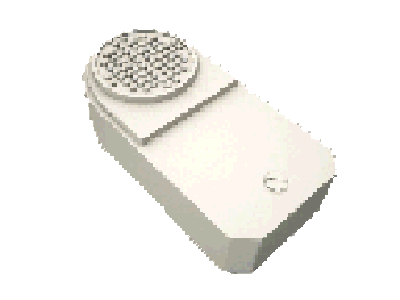
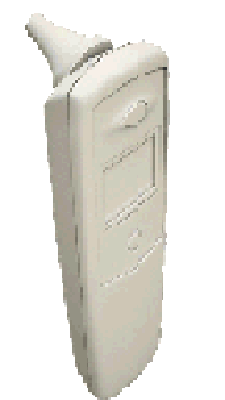
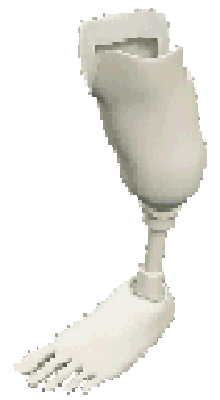
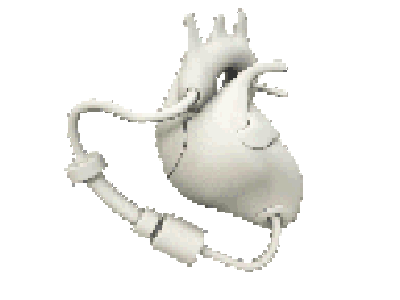
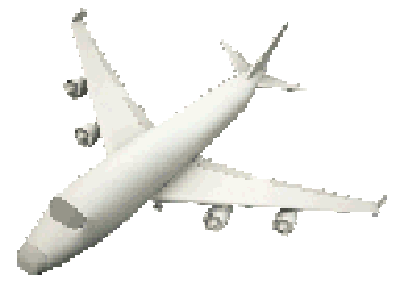
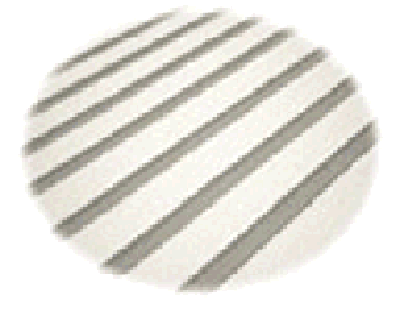
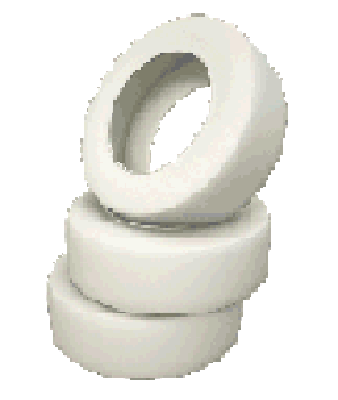
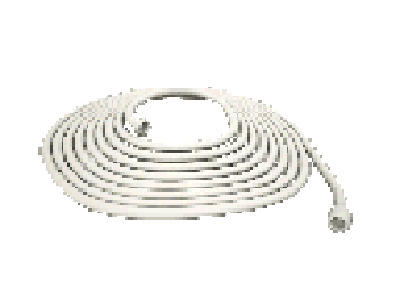
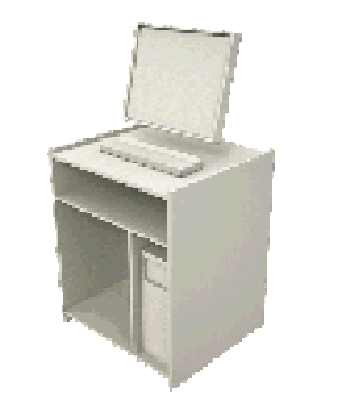
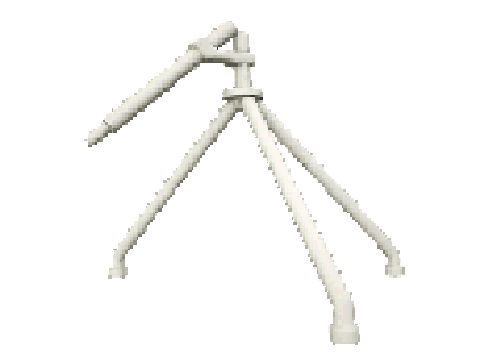
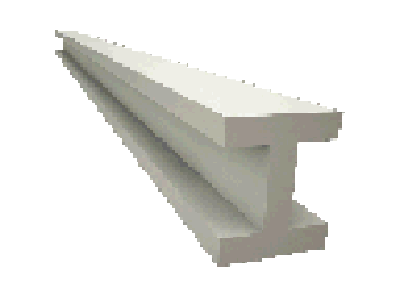
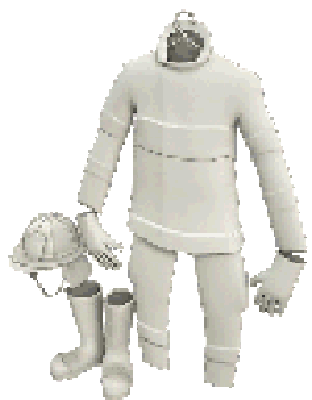
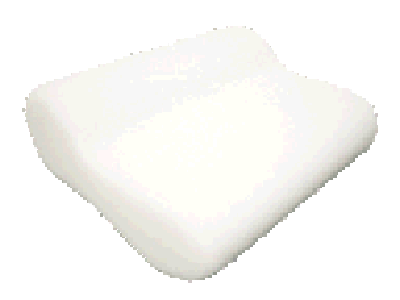
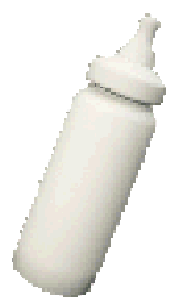
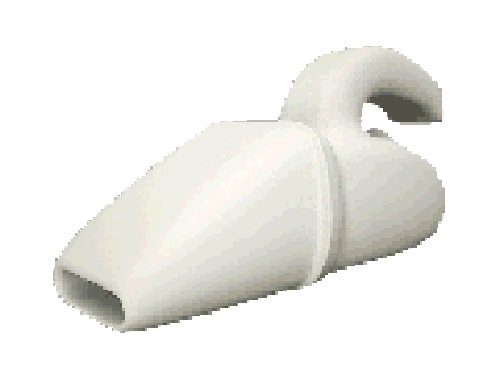
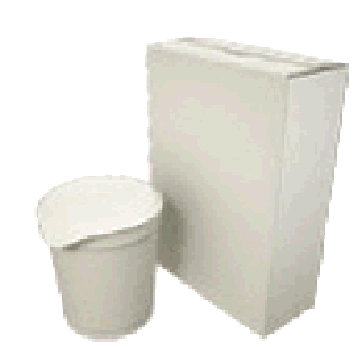
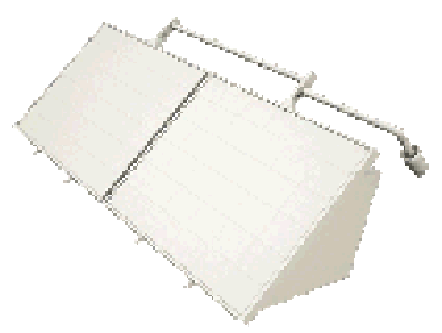
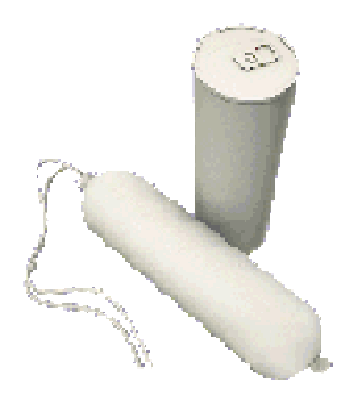
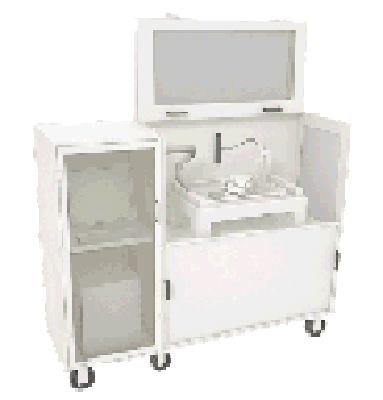
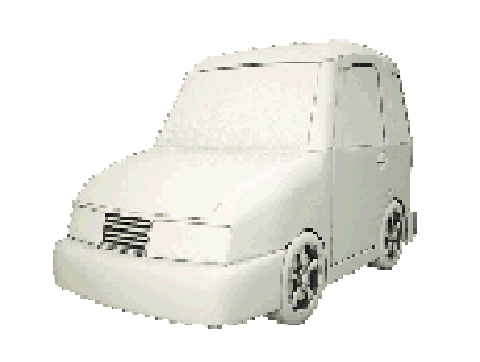
![URL]](/proxy.php?image=http%3A%2F%2F%5BURL%5Dhttps%3A%2F%2Fspinoff.nasa.gov%2FSpinoff2008%2Fimages%2F022_opt.gif%5B%2FURL%5D&hash=a47292e60770181667ecc4525a23318d)
![URL]](/proxy.php?image=http%3A%2F%2F%5BURL%5Dhttps%3A%2F%2Fspinoff.nasa.gov%2FSpinoff2008%2Fimages%2F023_opt.gif%5B%2FURL%5D&hash=74b85542efceaedc01bf02c1cbe2604d)
![URL]](/proxy.php?image=http%3A%2F%2F%5BURL%5Dhttps%3A%2F%2Fspinoff.nasa.gov%2FSpinoff2008%2Fimages%2F024_opt.gif%5B%2FURL%5D&hash=7ab0c16c3b4fcfd014f242aa70139149)
![URL]](/proxy.php?image=http%3A%2F%2F%5BURL%5Dhttps%3A%2F%2Fspinoff.nasa.gov%2FSpinoff2008%2Fimages%2F025_opt.gif%5B%2FURL%5D&hash=1e272283d6ae6e5ad36c720354fa1884)






